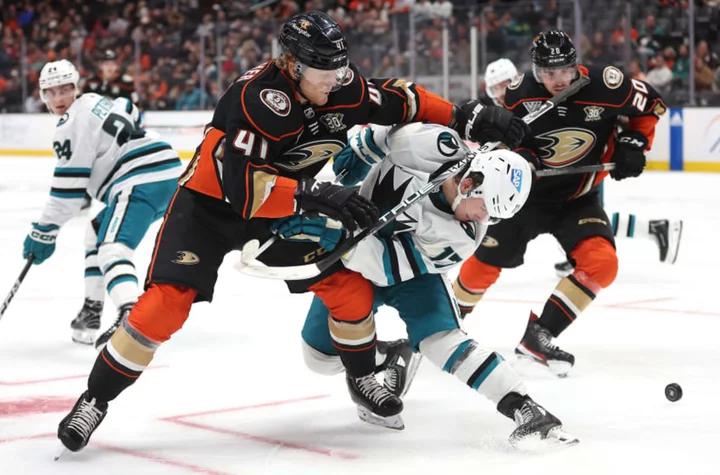Ah, cross-checking in hockey. It's as iconic as the Zamboni clearing a fresh sheet of ice, yet as controversial as a double-dipping nacho bandit at a house party. This delightful rule has all the markings for drama: misinterpretation, controversy, and, the pièce de résistance, a trip to the penalty box. Let's glide into what makes this such a fascinating sport's rule, shall we?
Breaking Down the Cross-Check
Think of cross-checking like a bear hug gone wrong. You have a player, stick in both hands, arms extended, enthusiastically introducing his stick to another player's body. Seems friendly enough, right? Well, the referees tend to see red instead of camaraderie. This is where things get a tad puckered up.
Cross-checking is simply when a player makes a check while both hands are on the stick, and no part of the stick is on the ice. The bear hug analogy may have been a bit off. It's more like a semi-friendly joust with a stick feathered by drama.
Why All the Fuss About Cross-Checking?
Now, you might be thinking, "It's hockey, not a synchronized figure skating. Some rough stuff is bound to happen, right?" Well, yes, but there's a caveat. While body checking is part and parcel of the sport, cross-checking is deemed too dangerous. It's like the difference between a firm handshake and a chokehold.
Here's the juice: a cross-check can snap a player's attention quicker than a cold shower in Antarctica. It can quickly pivot the game from a test of skills to a tit-for-tat of who can dish out the best "hockey hugs".
Cross-Checking: A Trip to the Penalty Box
So, what happens when a player decides to be a bit generous with their stick lovin'? They get a time-out, but not the chill-in-the-corner-and-ponder-your-actions kind. We're talking about the full-on, 2 minutes in the adult version of the naughty corner, the penalty box.
Cross-checking, in its melodramatic glory, brings with it a minor penalty. But hold onto your hockey helmets, because there's more. If the referee deems the cross-check to be egregious enough, our adventurous player might end up with a major penalty or a game misconduct.
Cross-Checking: The Conundrum Continues
Here's the bear trap in this hockey wilderness: even with the set guidelines, cross-checking is often a judgement call by the referees. Varying interpretations can lead to inconsistencies, which can frustrate players, fans, and yes, even us hockey analysts. One referee might see a cross-check while another sees a competitive edge. It's like trying to understand why brussels sprouts are on a holiday menu – it's just contentious.
So, when the ref's hand goes up and your favorite player skates shame-faced to the penalty box, remember to add a pinch of sympathy to your spicy shout outs. After all, cross-checking is part of the chaotic charm of the sport. Is it a fuzzy rule? Yes, but then again, isn't that just hockey's spicy love letter to controversy?

